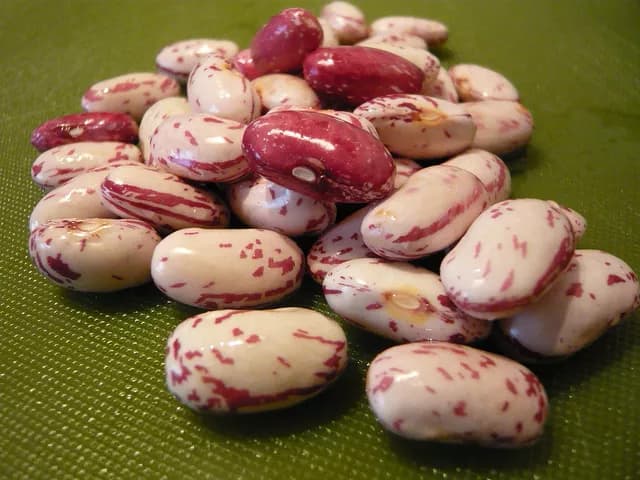The borlotti bean, also known as the Roman bean or romano bean is a variety of the cranberry bean (Phaseolus vulgaris) bred in Italy to have a thicker skin. The borlotti bean looks like the pinto bean but has more of a creamy texture and similar flavor to chestnuts.
Here are the 7 health benefits of the borlotti bean.
1. The borlotti bean is great for building muscle.
The borlotti bean is full of protein, which is an essential nutrient which helps form the structural component of body tissues and building muscle. It is classified as a high-quality protein because the bean contains all the nine essential amino acids that can only be obtained through consumption. One cup of borletti beans contains 17 grams of protein.
2. Borlotti beans are low on the glycemic index.
The glycemic index ranks food and drinks based on their blood sugar increase potential. Foods high on the glycemic index like white rice and white bread will break down easily and cause blood sugar and insulin level spikes after meals, which is followed by rapidly dropping blood sugar levels. Borlotti beans are slowly absorbed into the bloodstream, which prevents sugar crashes, sugar cravings, and mood swings. From a scale of 0 to 250, borlotti beans have a rating of 14 on the glycemic index scale.
3. Borlotti beans help the improve your digestion.
Borlotti beans are high in dietary fiber. One cup contains approximately 18 grams of fiber. The daily recommended dietary fiber intake for men and women are 38 grams and 25 grams, respectively. Fiber aids prevent constipation, making one’s bowel movement more regular. Also, soluble fiber may help reduce one’s appetite.
4. Borlotti beans can enhance your nervous system.
Some vitamins like folate play a critical in the regulation of specific amino acids that the nervous system requires. Studies have shown that a deficient amount of dietary folate can increase the homocysteine levels, which can be a dangerous precursor to neurodegenerative diseases like Alzheimer’s disease and Parkinson’s disease. One cup of borlotti beans contains 92 percent of the daily recommended value of folate.
5. Borlotti beans are helpful for pregnant women and their babies.
Folate has also shown to help in neural tube formation and red blood cell formation in prenatal babies. A deficiency of folic acid in pregnant women can lead to the birth of underweight infants and may also result in neural tube defects in newborns.
6. Borlotti beans can help maintain a healthy blood pressure.
Borlotti beans have a very high content of potassium and a low content of sodium. One cup of borlotti beans contains an enormous 685 milligrams of potassium, compared to 1.8 milligrams of sodium. Folate also contributes to the reduction of hypertension and relaxes blood vessels, while maintaining proper blood flow.
7. Borlotti beans can help stimulate blood cell formation.
Copper and iron are essential for the new blood cell formation. One cup of borlotti beans contains 21 percent and 20 percent of the recommended value of iron and copper, respectively. A deficiency in iron can lead to anemia.
Related Articles
Test Your Knowledge
Asked by users
Related Centers
Related Specialties
Related Physicians
Related Procedures
Related Resources
Join DoveHubs
and connect with fellow professionals


0 Comments
Please log in to post a comment.